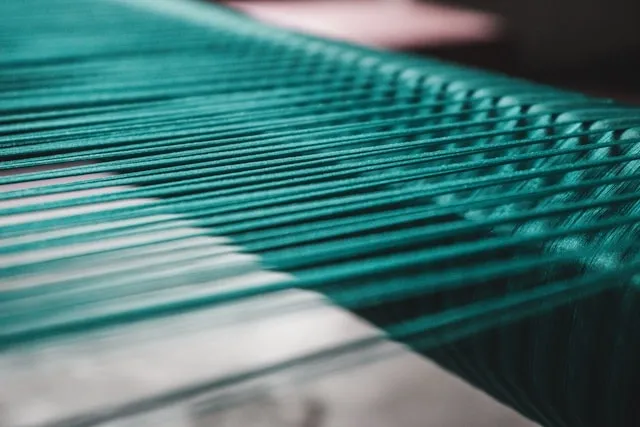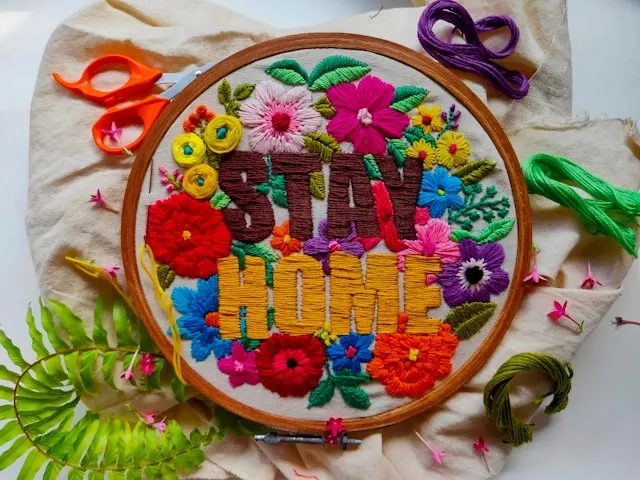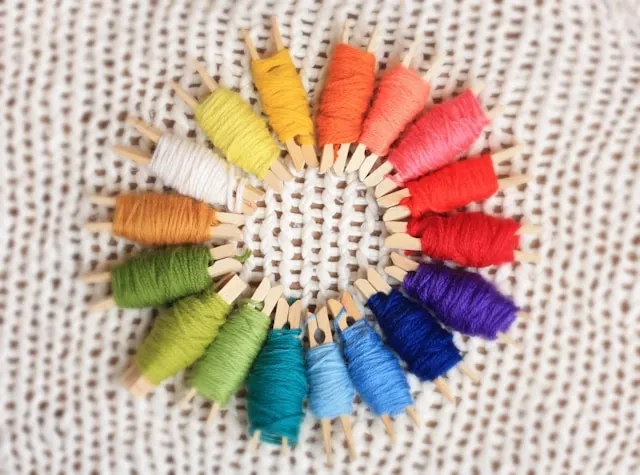Best Embroidery Machine For Patches (Types, Threads And Customization Tips)
Embroidery machines for patches are among the best tools to add high-quality, personalized accessories to garments, bags, and accessories. Whether for a hobbyist or a professional, the right embroidery machine can make a big difference in efficiency and precision.
There are budget-friendly models and high-end commercial machines, with something to suit every need. In this guide, we help you navigate what’s available and offer tips on selecting the ideal one for your patching goals.

Key Takeaways
- Embroidery machines are available in various types suited to different needs and budgets, from home use to commercial production.
- Essential features include hoop size, stitching speed, and longevity, all of which are key to producing high-quality patches.
- Invest in things like quality threads, stabilizers, and backings to ensure your custom patches stand the test of time.
- We supply high-quality custom patches for clothing that can be produced in bulk to your unique specifications at competitive prices.
Table of contents
-
Best Embroidery Machine For Patches
-
How To Choose The Best Sewing Machine For Patches?
-
What Is The Best Commercial Embroidery Machine For Making Patches?
-
Can You Make Custom Patches With An Embroidery Machine?
-
How To Choose Machine Based On Patch Design
-
Can You Use An Embroidery Machine To Sew On Patches?
-
What Is The Best Thread For Embroidery Patches?
-
What Stabilizer To Use For Patches?
-
What Kind Of Backing Do You Use For Embroidery Patches?
Best Embroidery Machine For Patches
When exploring the best sewing machines for patches, there are a few top contenders that stand out for features like performance, ease of use, and versatility. Brands that come to mind include Brother, Janome, and Bernina, with various machines known for producing professional-quality patches. Here are some suggestions:
- Brother PE800: Ideal for hobbyists, this features a large 5” x 7” embroidery field, an intuitive touchscreen, and 138 built-in designs.
- Janome Memory Craft 500E: For more advanced users, this offers greater speed and precision, with advanced editing features and a larger embroidery field.
- Bernina 770 QE: This caters to professionals who seek durability and high stitch quality.
There are unique features to each machine that will appeal to different users. If you only plan to use the sewing machine for attaching patches, design custom chenille patches with us to get a professional look to add to your garments.

How To Choose The Best Sewing Machine For Patches?
Choosing the best embroidery machine for patches requires an understanding of essential features. A good knowledge of how embroidery machines work and what they can do will help you comprehend the features that will work best for you. These may include:
- Hoop size
- Stitching speed
- Compatibility with different fabrics
If you are creating larger patches, a machine with an adjustable or larger hoop size is essential. The stitching speed is also important, particularly in a commercial environment where efficiency is key. Machines that offer programmable stitching patterns or built-in designs can simplify things like patch creation for beginners.
Different fabric types have an impact on seam efficiency when sewing. A machine that is versatile with different materials, from denim to felt, will ensure consistent, high-quality results. It’s also beneficial to evaluate the reputation of different brands, as companies like Borther and Janome have reputations for good customer support and machine longevity.
Want to make a statement with your team's apparel?
Enhance your uniforms with our custom patches!
Order now and create unique uniforms with our high-quality, personalized patches.
What Is The Best Commercial Embroidery Machine For Making Patches?
If you are a business focused on high-volume patch production, the best commercial embroidery machines combine speed, durability, and scalability. As an established brand in this sector, we have some expert insight into this. Here are a couple of top options:
- Brother PR1055X: This offers ten needles, so you quickly switch between different thread colors for increased efficiency. It also has a large embroidery field and advanced editing capabilities to create intricate designs.
- Melco Amaya XT: This stands out with its modular design that enables you to scale your production as your business grows.
Both of these machines are long-term investments that will deliver a good return by improving accuracy and reducing manual work. You will be able to use them to produce high-end patches at a faster rate. Alternatively, you could design your custom patches and then use our service to have them professionally produced at competitive prices.
What Are Different Types Of Embroidered Patches Machines?
There are actually several types of machines suitable for making embroidered patches. It’s important to examine the options available to you in order to ensure you find the optimal solution that delivers the necessary features for your needs. The different options include:
- Standard embroidery machines: These single-needle models are best for hobbyists working on small-scale projects.
- Multi-needle embroidery machines: These allow for quicker, more complex designs, making them a better fit for commercial use.
- Hybrid machines: With maximum versatility, these are useful for anyone who wants the option of sewing as well as embroidery.
Each type of machine offers specific advantages, so you will need to consider your needs to make the right choice. Think carefully about your required production volume, your budget, and the complexity of your designs. Seek expert advice if you are uncertain about anything as this is a key decision.

Can You Make Custom Patches With An Embroidery Machine?
Making custom patches with an embroidery machine can be a straightforward process if you have the right tools and setup. Here are the basic steps:
- Create the design: Design your custom patches using digital software that enables you to import images or create custom patterns.
- Upload to the machine: You will need your machine and an embroidery hoop and stabilizer. Most machines offer built-in designs, but custom patches will need personalized elements like logos, names, or color schemes.
- Let the machine work: When all the settings are confirmed, the machine will embroider your patch according to your instructions. When it is finished, you can remove it from the machine and cut it to the right shape.
Our service offers bulk custom embroidered patches to save you time, effort, and money if you need large quantities. You can add unique touches like different threads and textures, and choose from a range of patch backings to get the right solution.
Tips For Creating Unique Custom Patches Designs
If you want your custom patches to stand out, learn how to make embroidered patches with creative design elements that reflect personality and uniqueness. A little creativity goes a long way, and the concept of embroidery is filled with opportunities to do something different. Experiment with things like:
- Bold colors
- Textured threads
- Layered stitching
These things will help you achieve a more dynamic look. For instance, 3D embroidery or metallic threads can elevate a basic patch design, helping you achieve something special without having to think of unique ideas.
Incorporate elements like personal logos, names, or symbols to make your patches even more unique. You should also explore different backing options like Velcro or iron-on, as these can give your patches a functional edge. This kind of versatility can make your patches suitable for various applications, from uniforms to fashion accessories.
Stand out from the crowd with our unique designs
Customize your style with our patches!
Order now and make a statement
make your custom patchesHow To Choose Machine Based On Patch Design
When you are selecting an embroidery machine based on your desired patch design, think about the complexity and size of your intended creations.
- Large designs: You will need a machine that has a wider hoop size and advanced editing capabilities.
- Detailed, intricate designs: Meanwhile, multi-needle machines are ideal for this kind of work, as they facilitate the use of multiple thread colors without having to manually change in the middle.
- Simple designs: Single-needle machines may be sufficient for this, but they can be limiting if you plan to produce large or multi-colored patches often.
We recommend focusing on machines that offer customizable settings and built-in designs if you want to experiment with creative ideas. Patch type is another important consideration, so understand the differences between woven vs embroidered patches to understand what is actually needed to make what you want.
Can You Use An Embroidery Machine To Sew On Patches?
Embroidery machines can be a suitable solution for how to sew a patch onto a jacket or other garment. For sewing patches onto your apparel, many embroidery machines include specialized settings for appliqué, which can help with achieving precise placement.
Alternatively, you could use a standard sewing machine or apply hand-sewing techniques to get more precise control over the attachment process. For accurate placement, we recommend using a temporary adhesive spray or basting stitches before you secure the patch permanently. When you create custom patches with us, you also have the option to choose iron-on, Velcro, adhesive, and other patch types to simplify the attachment process.
If you are machine sewing, ensure that the patch is properly aligned to achieve a polished finish. A wonky or misaligned patch could affect your garment’s overall appearance, so take steps to align it carefully before attaching it.
Add a personal touch with our custom patches
Express yourself with our wide range of designs
Order now and make it yours.
What Is The Best Thread For Embroidery Patches?
Different thread types can have an impact on the strength of a seam or embroidered design. The quality of the thread you use for embroidery patches can significantly affect both its look and durability. Here are the most popular choices:
- Polyester: This thread is known for its strength and resistance to fading. It is ideal for patches that will be washed frequently and exposed to outdoor elements.
- Cotton: This thread offers a matte finish that helps deliver a soft, vintage look.
- Rayon: A thread that is prized for its sheen. Rayon can enhance the visual appeal of decorative patches.
When choosing a thread, consider the texture and color and how it complements your design. You could even use a combination of different thread types for a dynamic, striking look on your patches. However you proceed, make sure it will deliver a pleasing and durable piece.
What Stabilizer To Use For Patches?
Stabilizers are important for ensuring your fabric doesn’t shift or distort during embroidery. For patches, it is common to use one of the following stabilizer types:
- Cut-away: These provide the best support for dense stitching and are often recommended if your patches will be handled frequently.
- Tear-away: Choose these for lighter fabrics, but be aware that they may not offer sufficient support for intricate designs.
- Wash-away: These are the ideal choice for delicate fabrics. They dissolve in water and leave no residue.
Select a stabilizer based on your fabric type and the level of detail in your patch design. If you are creating patches for personal use, consider other things you could use to elevate the aesthetic of your apparel. Our custom embroidery buttons, for example, could be personalized to match your patch perfectly for a unique yet cohesive look.
Make a statement with our unique designs
Stand out with our custom patches!
Order now and show off your style
make your custom patchesWhat Kind Of Backing Do You Use For Embroidery Patches?
The ideal backing choice for your embroidery patches depends on how you want to apply the patch. Among the most popular choices, we recommend you consider the following:
- Iron-on: These are a popular choice as they are easy to apply and durable enough for most clothing and accessories.
- Sew-on: Ideal for a permanent attachment, these offer a secure solution that will withstand frequent washing and wear.
- Adhesive: These backings work well for temporary patches like name tags or event patches.
When you work with us, you can choose any of these options, or you could get a Velcro patch or one with a safety pin backing. Think carefully about the intended use of your patch and ensure your chosen backing is compatible with the fabric. You can tell if a patch is iron-on by checking the back - if it has a smooth, glossy finish, this probably indicates the presence of heat-activated adhesive.

Tips On Customizing Patch Backings To Suit Different Uses
Customizing the backing of patches can help to find the right solution for different garment types and applications. For instance, temporary patches may be a good fit for adhesive or Velcro backings as these are easy to remove and reapply as needed.
Iron-on backings, meanwhile, offer a semi-permanent solution that is easy to apply, and great for clothing that you wear occasionally. Or, if your patch is intended for heavy-use garments like uniforms, a patch with a sew-on backing offers extra durability. This is probably the best solution for custom military patches, for example.
You can mix and match different backings to create multi-functional patches if this works for you. With many options at your disposal, you have the flexibility to create a solution that works for you. Just pay attention to the specifics of different backing types to find the right option.
Frequently Asked Questions About Best Embroidery Machine For Patches
What Is The Best Embroidery Machine For Patches?
There are various embroidery machines that are good for making patches. Standout models include the Brother PE800, Janome Memory Craft 500E, and Bernina 770 QE.
Can You Use An Embroidery Machine To Sew On Patches?
Yes, you can, as most embroidery machines have a special applique mode that is ideal for this. Otherwise, you could use a standard sewing machine or simply hand-sew if you want greater control over the process.